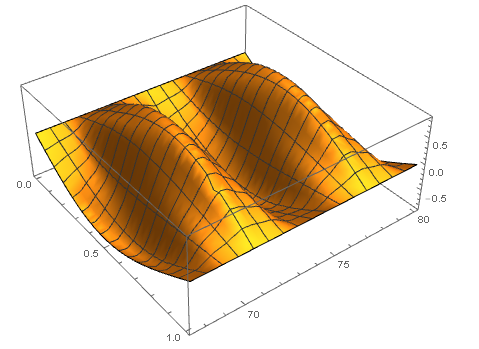This is no error only, a warning messages.
How about:
x0 = 0.25; T = 20; u1 = -0.03; u2 = 0.07; u3 = -0.04;
a = 1/100; t0 = 5; omega = 2;
a = 0.01; dis[x_] := a/(Pi (x^2 + a^2))
P[t_] := If[t <= t0, Sin[omega t], 0]
u[t_] := u1 HeavisideTheta[t - 0.8] +
u2 HeavisideTheta[t - 1.64] + u3 HeavisideTheta[t - 3.33]
pde = a D[w[x, t], {x, 4}] + D[w[x, t], {t, 2}] -
P[t] dis[x - x0];
ppR = 50;(* for better result you can increase this number . Beware, more RAM and CPU time *)
sol = NDSolve[{pde == 0, w[0, t] == u[t], w[1, t] == 0,
Derivative[2, 0][w][0, t] == 0, Derivative[2, 0][w][1, t] == 0,
w[x, 0] == 0, Derivative[0, 1][w][x, 0] == 0},
w[x, t], {x, 0, 1}, {t, 0, 80},
MaxSteps -> Infinity,
PrecisionGoal -> 2,
AccuracyGoal -> 2,
Method -> {"MethodOfLines",
"SpatialDiscretization" -> {"TensorProductGrid", "MinPoints" -> ppR,
"MaxPoints" -> ppR, "DifferenceOrder" -> 2},
Method -> {"Adams", "MaxDifferenceOrder" -> 1}}];
Plot3D[Evaluate[w[x, t] /. sol], {x, 0, 1}, {t, 0, 80}]

Plot3D[Evaluate[w[x, t] /. sol], {x, 0, 1}, {t, 80 - 4*Pi, 80}]
